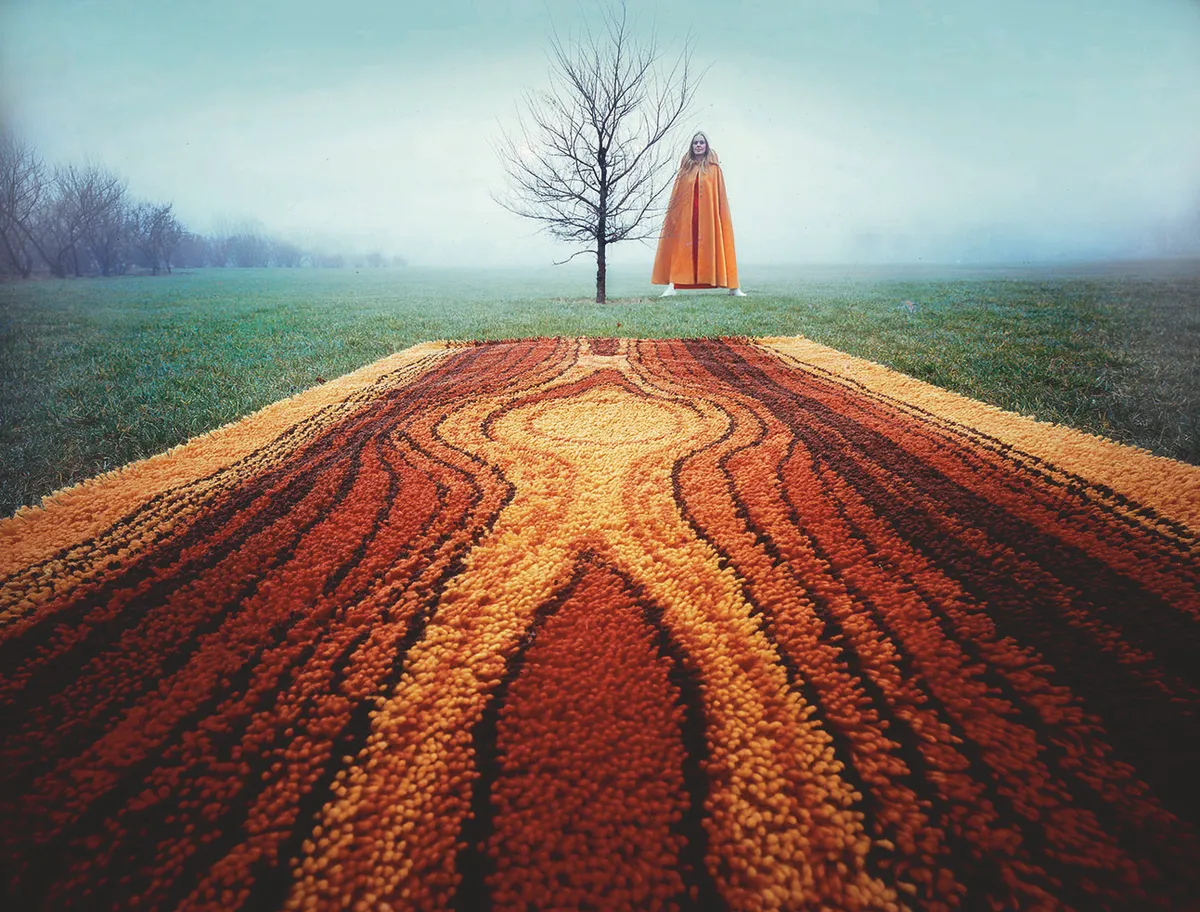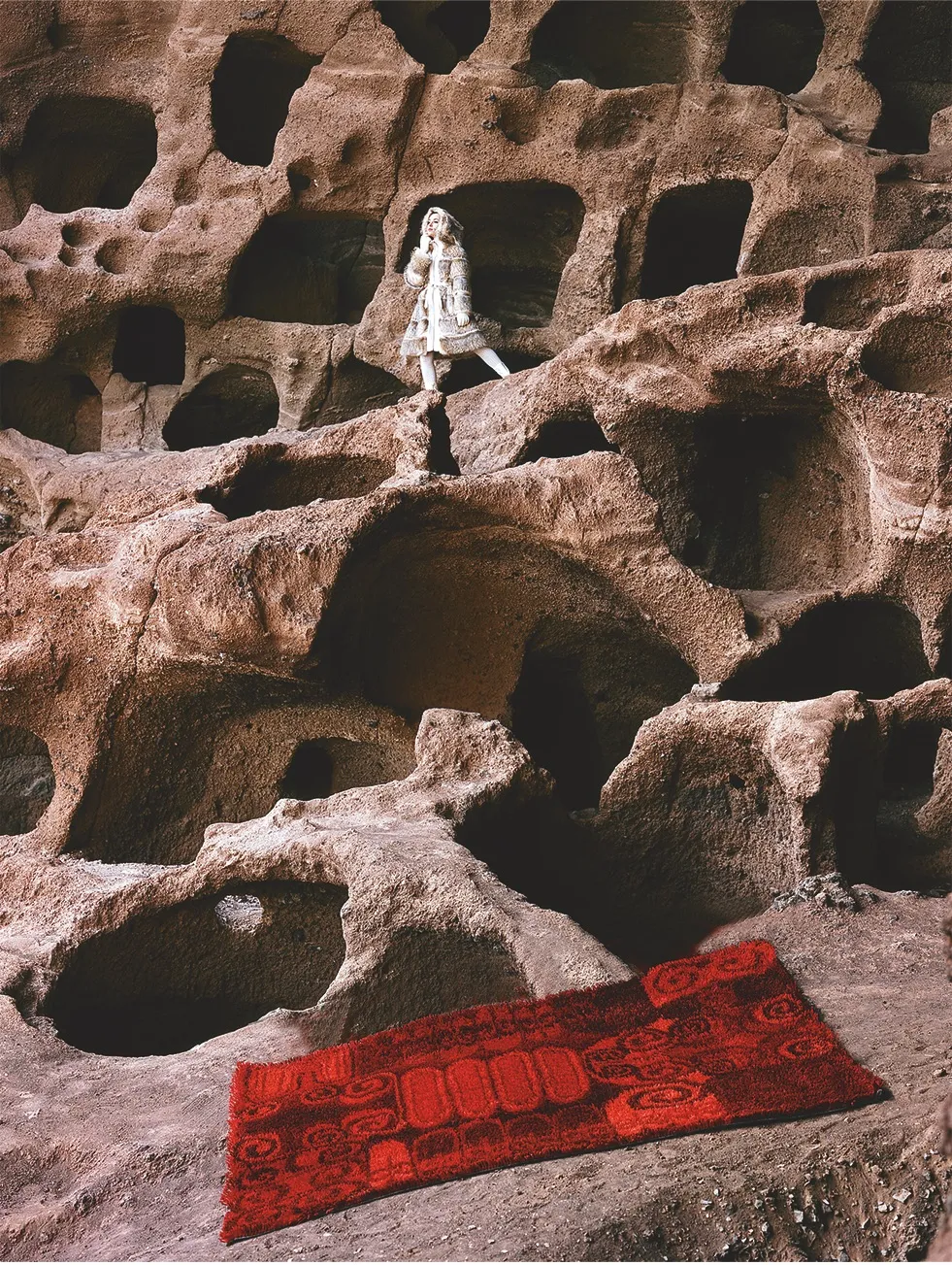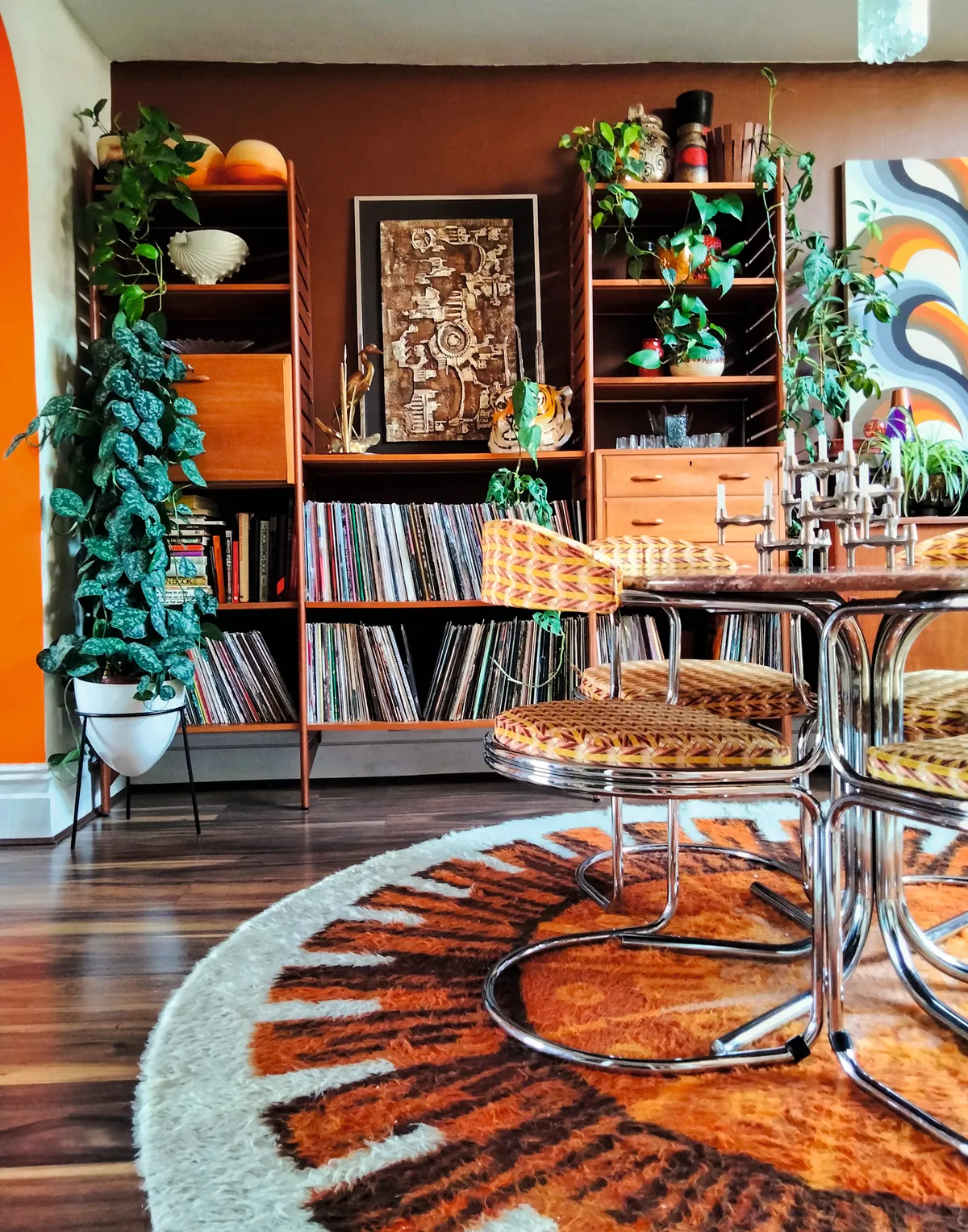In 1971, young newlywed Denise McClean bought a tangerine-coloured rya rug. Her mother did not approve. ‘She thought the orange colour was very vulgar,’ recalls Denise. ‘But, most of all, she was worried the shag pile would encourage lolling about on the floor!’
Denise’s mother might have been reassured to know that rya rugs have been part of traditional Scandinavian interiors for centuries. ‘Rya’ simply means ‘rug’ in Swedish. One of their unique features is the long, shaggy pile, typically one to three inches, which is made from strands of knotted wool.

What is the history of rya rugs?
Kajsa Vildängen, whose company Rugs of Sweden specialises in vintage and handmade rugs, explains there is a strong tradition of rug-making in Scandinavia. The skill was historically passed on from mother to daughter.
As well as keeping the home warm and snug, an accomplished rug-maker could generate extra income for the household. Kajsa sells two kinds of traditional Scandinavian rug: rag rugs woven on looms from scraps of threadbare fabric; and the shaggy knotted wool ryas that later became a hot design trend in the 1960s and 1970s.
Kajsa explains that long-pile shaggy wool ryas weren’t originally used on the floor: ‘In the 1400s and 1500s they started out as bedcovers. The soft shaggy side was turned downwards for warmth – the more luxurious versions doubled up with the shag on both sides.’
For much of the year, a typical 15th-century family would have to spend all their time in one very small house together where they would cook, eat, wash the dishes (and occasionally themselves) and sleep. ‘If they were very primitive, the floors would just be stamped clay,’ says Kajsa. ‘In winter, rugs were used on the beds. In summer, they were hung on the walls.
To people living in simple cottages, it would seem like unthinkable luxury or just plain foolishness to put valuable textiles on the floor and walk on them. It was only much later in the 1800s that ordinary working people started putting their precious rugs on the floors, once they had bedcovers made from quilted fabric and their houses had solid wooden floors.’
When did rya rugs become popular?
From the early 1960s, Danish producer Ege Rya’s machine-made psychedelic ryas brought a blast of colour to homes across drab post-war Europe. Their use of industrial carpet-making machines to make ryas was highly innovative – until this point all ryas were painstakingly knotted by hand.
The designs might have been the epitome of psychedelia, but in the production process emphasis was still placed on quality and durability. The company’s ryas were made predominantly from wool, rather than synthetic fibres, and were guaranteed to be moth-proof. Customers were also assured that the intense colours would not fade for 25 years.
Retired Ege director Vagn Larsen estimates that in their heyday more than a million ryas were sold to customers all over the world. Although the larger rugs were popular with customers, they were also quite expensive, so Vagn says the company began retailing smaller 60x70cm ryas, designed to be hung on the wall, making the trend accessible to all.
Ege Rya came up with a highly innovative advertising campaign for its new rugs, working in collaboration with famous Danish photographer Poul Ib Henriksen. All the images featured elegant models and ryas juxtaposed with unusual outdoor settings. For instance, in one image a model relaxes by a stream, watching the rya draped in the water. In another advert, a woman enthusiastically plays the clarinet while her rya doubles as a beach towel.

Shagpile reached the peak of its popularity in the 1970s. By the middle of this decade, oil shortages, financial crashes, political scandals and the Vietnam War had severely dented the confident spirit of the Sixties. In his book The Great Funk, American design critic Thomas Hine argues that in the 1970s people created refuges in their homes from the world outside and filled them with jungles of plants, big patterns and shaggy carpets. Shag became ‘a celebration of growth – the force of life that encouraged optimism even when man-made systems break down’.
Are rya rugs worth collecting today?
Perhaps rya rugs are making a comeback today for similar reasons. Vintage interiors expert Keeley Harris says that her clients love ryas’ bold, clashing colours, which – just as Ege Rya promised back in the 60s and 70s – still haven’t faded with age. ‘Their cheerful, optimistic vibe is very appealing, particularly at the moment when we all need some colour in our lives and want to escape from what’s been happening in the world.’
Estelle Bilson, whose colourful home is a tribute to 1970s style, agrees. ‘People are really into retro wallpapers, and even painting the ceilings in bold colours. Rugs are a really undervalued way of decorating. But a bright shaggy rug brings a textural quality to a room and isn’t a big commitment – you can roll it up and move it easily. It’s like choosing art for the floor.’

How much do rya rugs cost?
Keeley warns that vintage wool ryas are becoming increasingly difficult to find: ‘Prices have gone bonkers. A larger Ege Rya would easily be £500-plus, but that’s a conservative estimate. It is rare when I come across a super-sized rya, or one of the huge 250cm circular rugs. They were really expensive at the time and so fewer were made. They are highly sought after.’
As they are becoming so scarce, Estelle is launching a range of bespoke ryas, working in collaboration with young designer Charlie Jackson. Inspired by iconic rya designs from the 60s and 70s, the rugs also hark back to previous centuries when the rugs were individually handmade by women. ‘The ryas we are producing are quite psychedelic, but really they are heritage pieces – handmade, using quality materials, and intended to last for decades,’ says Estelle.
Back in 1971, little did Denise McClean know that decades later her rug would still be highly desirable. Perhaps her mother would have approved after all.
